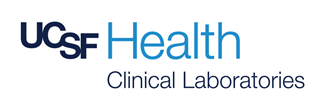
Peninsula Outpatient Center
Peninsula Outpatient Center (Mon-Fri 0800-1630)
Peninsula Outpatient Center
| Age | mg/dL |
| 0 to 6 days | See www.bilitool.org |
| >6 to <15 days | 0.2-16.6 |
| 15 days to <1 year | 0.1-0.7 |
| 1 to <9 years | 0.1-0.4 |
| 9 to <12 years | 0.1-0.6 |
| 12 to <15 years | 0.1-0.7 |
| 15 to <19 years | 0.1-0.8 |
| ≥19 years | 0.2-1.2 |
| Age | mg/dL |
| ≥ 19 years | 0.2-1.2 |
| AGE IN DAYS | CRITICAL VALUE (mg/dL) |
| 0 | > 6 |
| 1 | > 9 |
| 2 | > 12 |
| 3 | > 15 |
| 4 | >18 |
| 5-30 | > 21 |
Peninsula Outpatient Center
Peninsula Outpatient Center (Mon-Fri 0800-1630)
| Age | mg/dL |
| 0 to 6 days | See www.bilitool.org |
| >6 to <15 days | 0.2-16.6 |
| 15 days to <1 year | 0.1-0.7 |
| 1 to <9 years | 0.1-0.4 |
| 9 to <12 years | 0.1-0.6 |
| 12 to <15 years | 0.1-0.7 |
| 15 to <19 years | 0.1-0.8 |
| ≥19 years | 0.2-1.2 |
| Age | mg/dL |
| ≥ 19 years | 0.2-1.2 |
| AGE IN DAYS | CRITICAL VALUE (mg/dL) |
| 0 | > 6 |
| 1 | > 9 |
| 2 | > 12 |
| 3 | > 15 |
| 4 | >18 |
| 5-30 | > 21 |
| Ordering |
Peninsula Outpatient Center
Peninsula Outpatient Center (Mon-Fri 0800-1630)
| Collection |
| Processing |
Peninsula Outpatient Center
| Result Interpretation |
| Age | mg/dL |
| 0 to 6 days | See www.bilitool.org |
| >6 to <15 days | 0.2-16.6 |
| 15 days to <1 year | 0.1-0.7 |
| 1 to <9 years | 0.1-0.4 |
| 9 to <12 years | 0.1-0.6 |
| 12 to <15 years | 0.1-0.7 |
| 15 to <19 years | 0.1-0.8 |
| ≥19 years | 0.2-1.2 |
| Age | mg/dL |
| ≥ 19 years | 0.2-1.2 |
| AGE IN DAYS | CRITICAL VALUE (mg/dL) |
| 0 | > 6 |
| 1 | > 9 |
| 2 | > 12 |
| 3 | > 15 |
| 4 | >18 |
| 5-30 | > 21 |
| Administrative |
| Complete View |
Peninsula Outpatient Center
Peninsula Outpatient Center (Mon-Fri 0800-1630)
| Age | mg/dL |
| 0 to 6 days | See www.bilitool.org |
| >6 to <15 days | 0.2-16.6 |
| 15 days to <1 year | 0.1-0.7 |
| 1 to <9 years | 0.1-0.4 |
| 9 to <12 years | 0.1-0.6 |
| 12 to <15 years | 0.1-0.7 |
| 15 to <19 years | 0.1-0.8 |
| ≥19 years | 0.2-1.2 |
| Age | mg/dL |
| ≥ 19 years | 0.2-1.2 |
| AGE IN DAYS | CRITICAL VALUE (mg/dL) |
| 0 | > 6 |
| 1 | > 9 |
| 2 | > 12 |
| 3 | > 15 |
| 4 | >18 |
| 5-30 | > 21 |